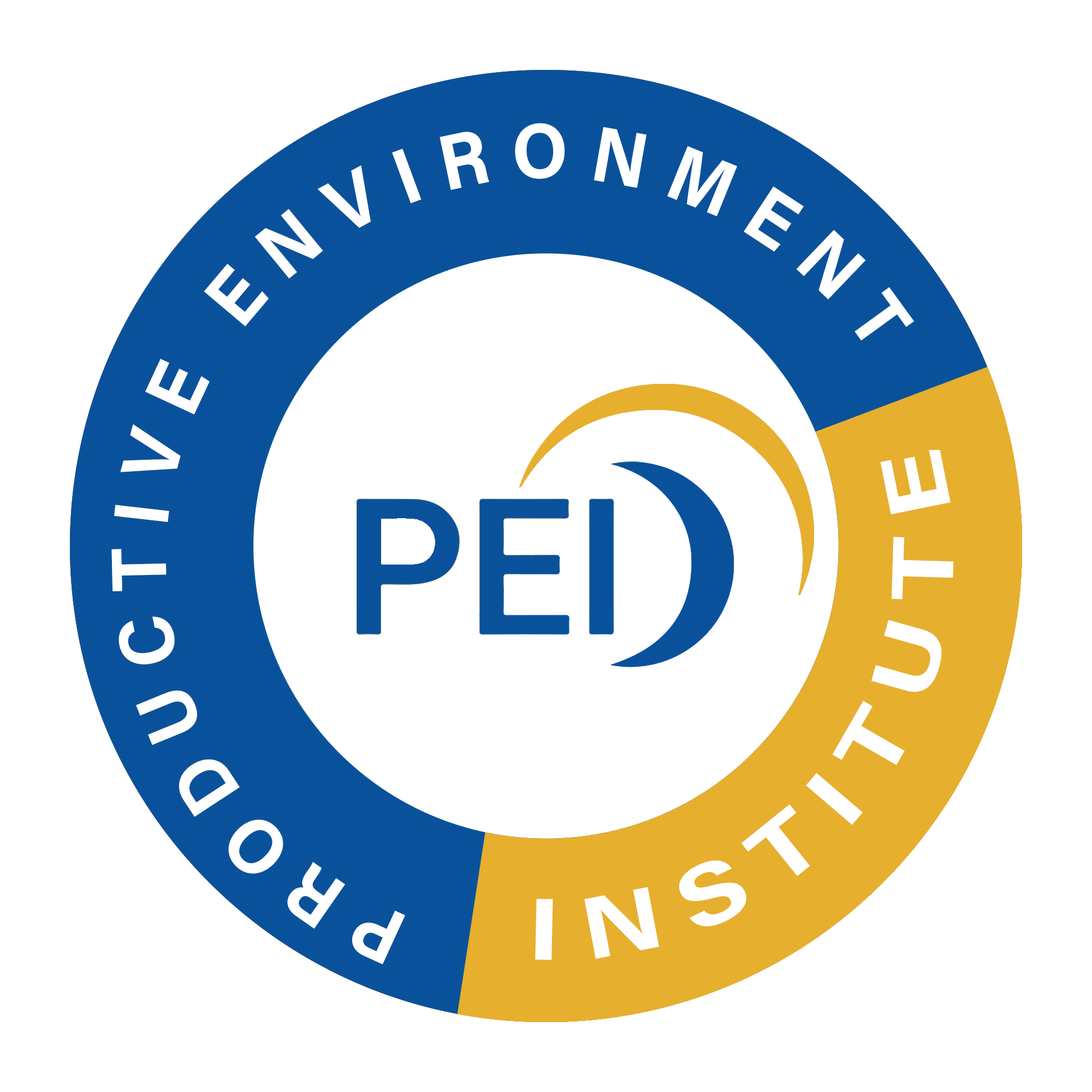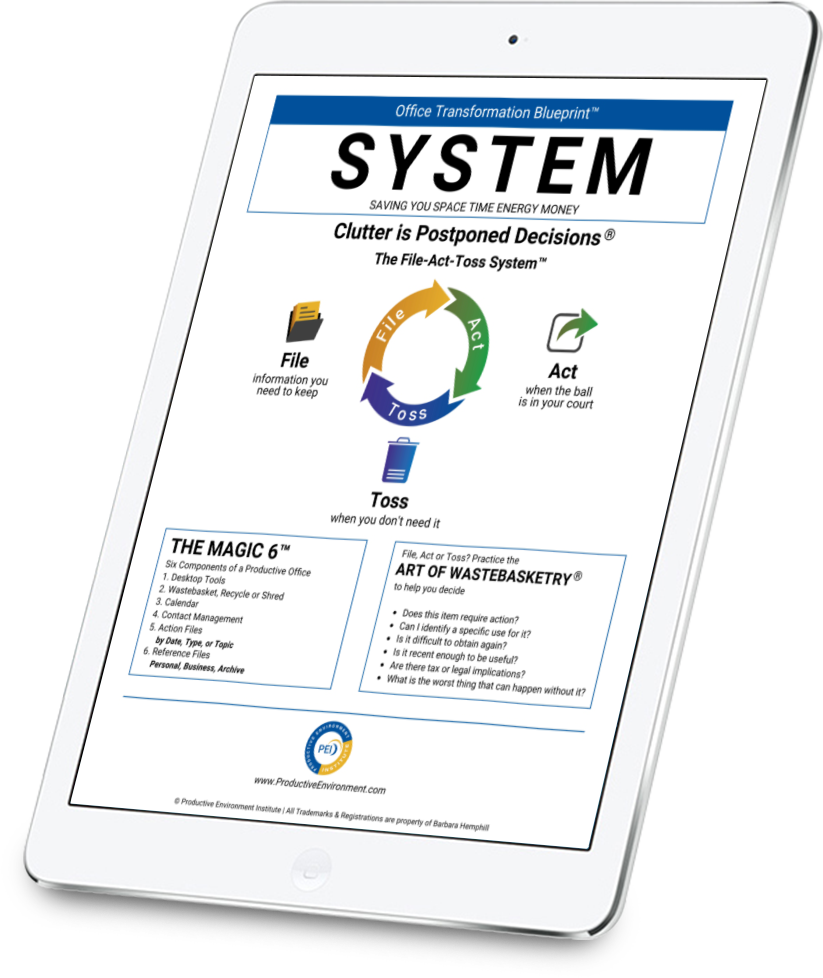Productive Environment Blog

The Eisenhower Matrix: A Tool for Time Management and Productivity | Kathy Muzik
“Most of us spend too much time on what is urgent and not enough time on what is important.” – Stephen R. Covey
Our days can feel chaotic with endless to-do lists and shifting priorities. Because of this, managing your time effectively can feel like an uphill battle.
A classic tool that can help bring clarity to your day and has recently experienced a bit of a resurgence in popularity is the Eisenhower Matrix—a productivity framework designed to help you decide on, prioritize, and delegate tasks based on urgency and importance.
Named after President Dwight D. Eisenhower, who famously said, "What is important is seldom urgent and what is urgent is seldom important," the Eisenhower Matrix encourages a mindset shift that can help you focus on what truly matters.
Many people have expressed to me that while using the Eisenhower Matrix sounds simple in theory, they struggle to put it into practical, everyday use. Today, I want to explain how the Eisenhower Matrix works and how you might use it, or at least its concepts, to improve your productivity.
Understanding the Eisenhower Matrix
The Eisenhower Matrix is a 2x2 grid, with each quadrant representing a different type of task based on two factors:
Urgency: How soon does the task need to be done?
Importance: How much impact does the task have on your long-term goals and success?
Let's break each quadrant down and dive deeper into what it represents:
Quadrant 1: Urgent and Important (Do First)
In the upper left corner of the Matrix are tasks that need immediate attention and are crucial for long-term success. Think of them as the "crises" or "fire drills" that require immediate focus. These include meeting a tight deadline, handling an urgent problem, or dealing with an emergency.
How to handle this quadrant:
Prioritize these tasks first. They require your attention right now, so tackle them head-on and ensure they are completed as soon as possible.
But it doesn't end there. The next step is to determine what caused the emergency or problem and whether it is possible to prevent it from happening again.
We often feel our days are out of control because of these fire drills, but we never take the time to analyze their origin and ways to avoid them.
Quadrant 2: Not Urgent but Important (Schedule)
Tasks in the upper right corner of the Matrix are significant to your overall success and personal growth, but they don't need to be done immediately. This quadrant is where you want to focus most of your time because it involves activities that contribute to long-term goals, such as strategic planning, professional development, relationship-building, and self-care.
How to handle this quadrant:
Schedule these tasks on your calendar and honor your commitment to yourself! They may not have an immediate deadline but are essential for future success. Consistent progress on these tasks will lead to long-term benefits.
These tasks are the most difficult to complete because they lack the urgency of the fire drills, so we often feel there is no time for them.
Determining and minimizing the cause of fire drills and emergencies from Quadrant 1 that divert your attention is essential, as it will free your mind and time to devote to important tasks here in Quadrant 2.
Quadrant 3: Urgent but Not Important (Delegate)
Tasks in this lower left quadrant demand attention quickly but don't contribute significantly to your personal or professional goals. Often, these tasks are distractions or requests from others that someone else can easily handle.
How to handle this quadrant:
Delegate these tasks to someone else if possible. If delegation isn't an option, try to minimize time spent on them or quickly complete them so you can focus on more important work.
Quadrant 4: Not Urgent and Not Important (Eliminate)
These tasks, located in the lower right quadrant, are both time-wasters and distractions. They don't add value to your life or work and often consume time without yielding positive results.
How to handle this quadrant:
Eliminate these tasks from your to-do list. They are the activities that distract you from your goals, like mindless social media scrolling or unnecessary meetings. Instead, use that time to focus on more meaningful tasks.
This quadrant does not include intentional downtime, relaxation, and self-care! These are necessary elements of good health and well-being.
Be mindful of the use of your time.
How to Use the Eisenhower Matrix Effectively
To help the Eisenhower Matrix work for you, follow these steps:
List Your Tasks: Write down all the personal or professional tasks you need to complete.
Categorize Each Task: Sort each task into one of the four quadrants based on urgency and importance. Be honest with yourself about how crucial each task is. For example, preparing for a client meeting may be urgent and important, but scrolling through emails can likely be delegated or scheduled for specific times during the day.
Focus on Quadrant 1 and 2: Start by immediately tackling Quadrant 1 (Urgent and Important) tasks, then prioritize Quadrant 2 (Not Urgent but Important) tasks. The goal is to spend as much time as possible in Quadrant 2 because these tasks lead to long-term success. (I do recommend focusing on only three priority tasks daily to avoid burnout. If you complete them and want to keep the momentum going, you can always add more later.)
Delegate or Eliminate Quadrants 3 and 4: Recognize that Quadrant 3 (Urgent but Not Important) and Quadrant 4 (Not Urgent and Not Important) tasks are often distractions. Delegate or eliminate them to free up more time for your important tasks.
Reevaluate Regularly: Your priorities and tasks will shift over time. Regularly reevaluate your task list and adjust it according to what is truly important.
The Benefits of the Eisenhower Matrix
Increased Clarity: By categorizing tasks, you better understand what's important and what you can ignore or defer.
Reduced Stress: Knowing which tasks to tackle first and which can wait allows you to focus on the right things, reducing overwhelm.
Better Time Management: By concentrating on Quadrants 1 and 2, you ensure that you invest your time in activities that move you closer to your long-term goals.
Improved Decision-Making: The Matrix helps you make better decisions by removing the ambiguity around task prioritization.
The Eisenhower Matrix is a powerful tool that dramatically improves productivity and decision-making. By learning to prioritize based on urgency and importance, you'll avoid getting caught up in distractions and ensure your time is spent on what truly matters.
Give it a test drive and see how it transforms your approach to task and time management.
You may find yourself achieving more with less stress!
Meet Our Team of Experts

BARBARA HEMPHILL
FOUNDER
Productive Environment Institute

ANDREA ANDERSON
CEO
Productive Environment Institute

KAREN LYNCH
CPES Masters™ Plus
San Francisco Bay Area, CA

JULIANA KATHMAN
CPES Masters™ Plus
Statesville, NC

KATHY MUZIK
CPES Masters™ Plus
Chicago, IL

ANN THOMPSON
CPES Masters™ Plus
Charlottesville, VA

KERRY THOMAS
CPES Masters™
The Villages, FL + VA

CAREN OSBORNE
CPES Masters™
Chapel Hill + Raleigh, NC

KATRINA WILLIS
CPES Masters™
Wentworth Point, NSW

BARBARA MUCKEL
CPES Masters™
Crown Point, IN

CARLA ZWAAN
CPES Masters™
Shelton, CT

TERRY LOFGREN
CPES Masters™
Austin, TX

LIZ FACKELMAN
CPES Core™
Davidson & Lake Norman, NC

CONTACT US
Use the Contact button on this page or
Leave a Voicemail @


